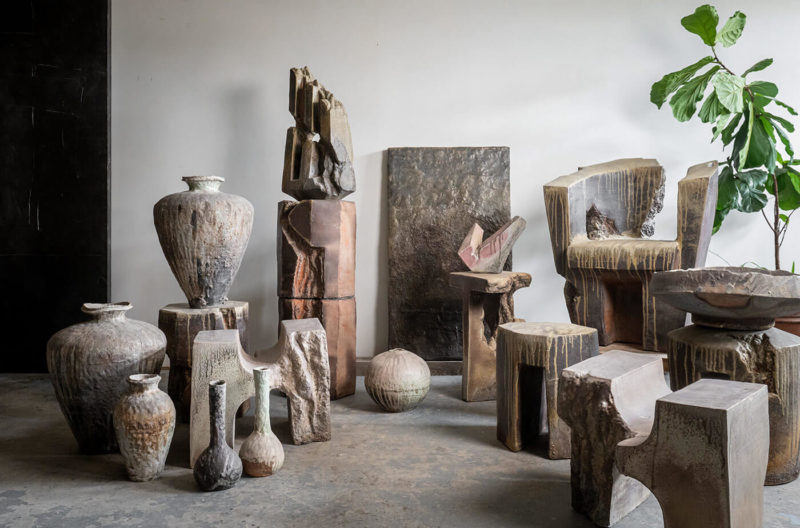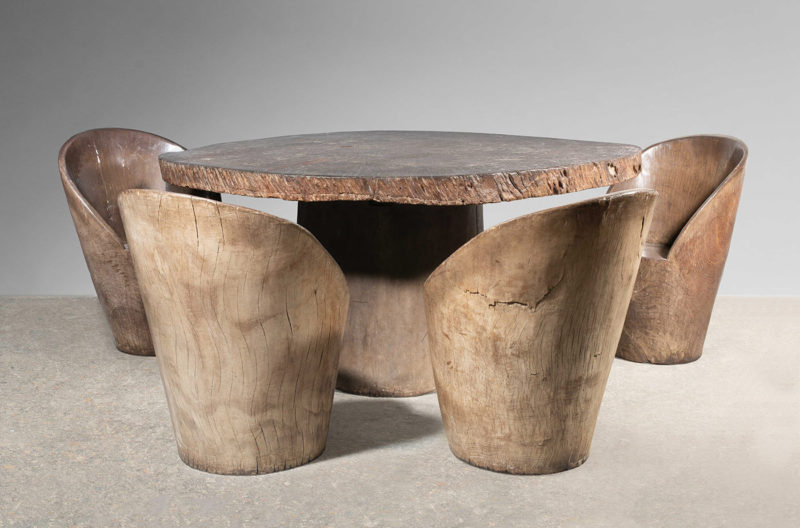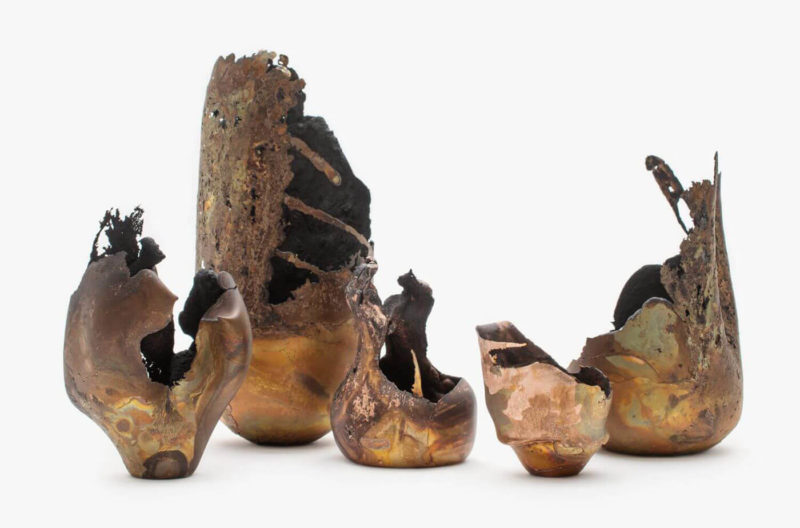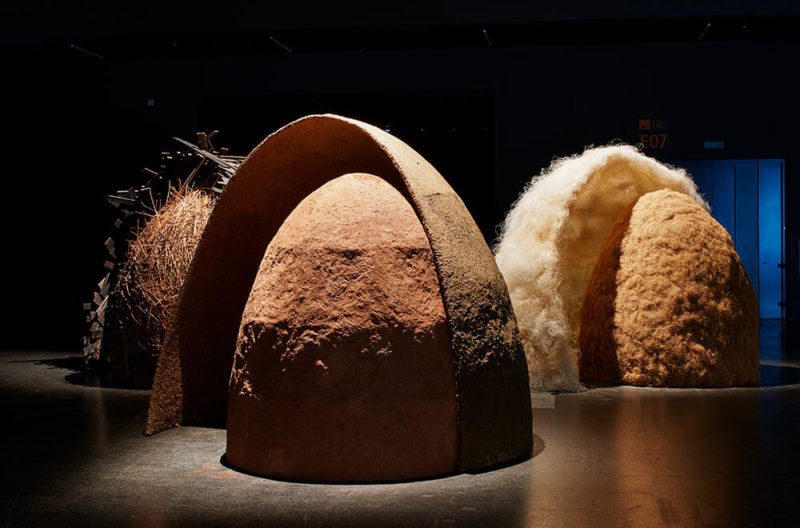New York Dispatch 2 / September 2022
Uncovering hidden gems by two giants of different traditions, two New York mainstay galleries are enriching design history.
R & Company: ‘Joaquim Tenreiro: Tectonic Master’
9th September-28th October
Almine Rech: ‘Le Corbusier, Nomadic Murals’
14th September-22nd October
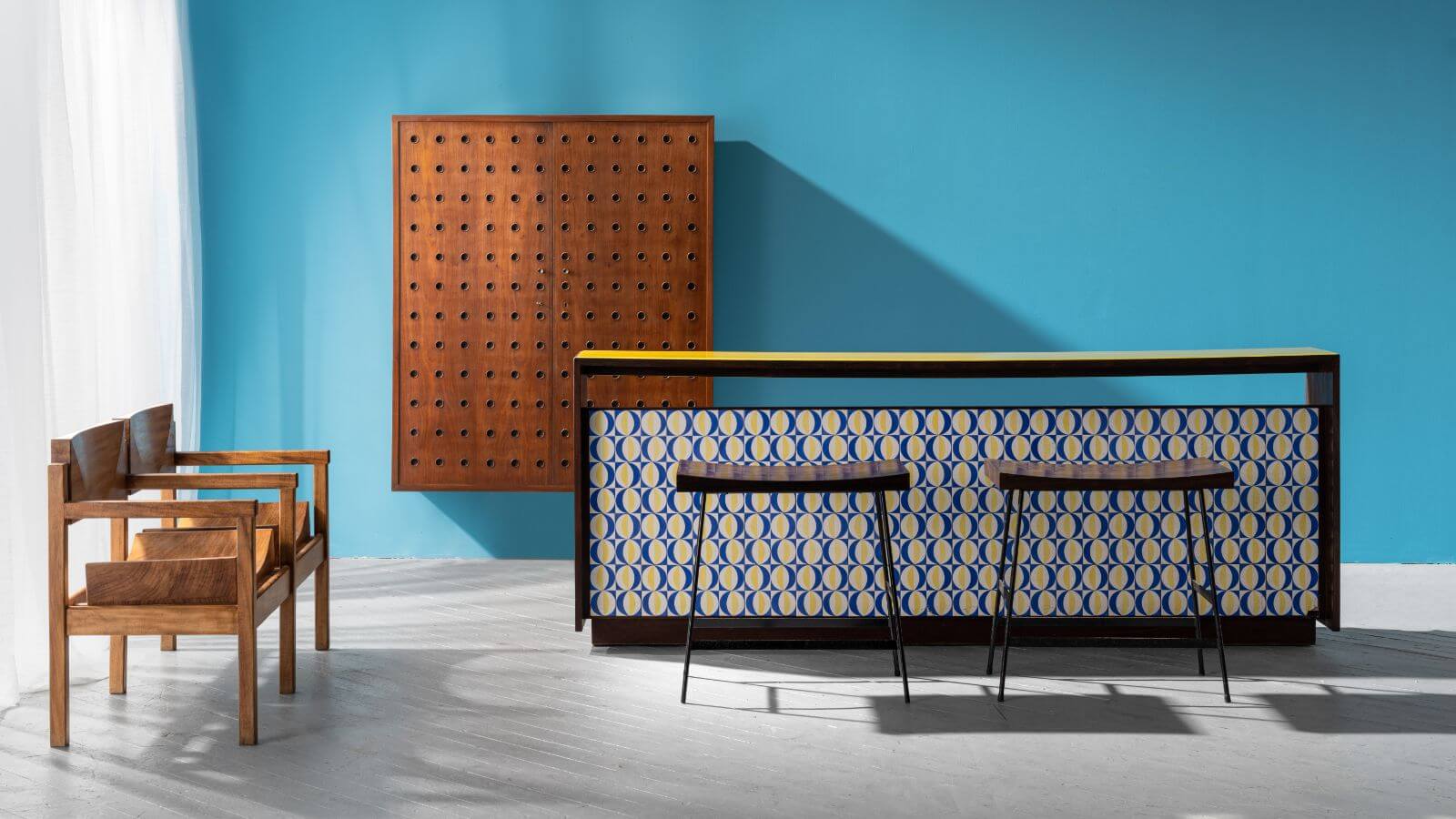
Exhibition view, ‘Joaquim Tenreiro: Tectonic Master’, at R & Company
COURTESY: R & Company / PHOTOGRAPH: Joe Kramm
NEW YORK IS returning from a summer away with a tempting roster of collectible design exhibitions focused on young talents. Against this contemporary backdrop, exhibitions at R & Company and Almine Rech take a historical slant, bringing lesser-known facets of two well-exposed design masters to the limelight.
Born of different philosophies within the scope of the modernist era, Brazil’s Joaquim Tenreiro and Switzerland’s Charles-Édouard Jeanneret (otherwise known as ‘Le Corbusier’) forged practices at either end of the spectrum in their respective realms of influence. Yet, their works share universal principles of self-expression, adapted craft traditions, honest construction, trans-disciplinarity, and unabashed experimentation.
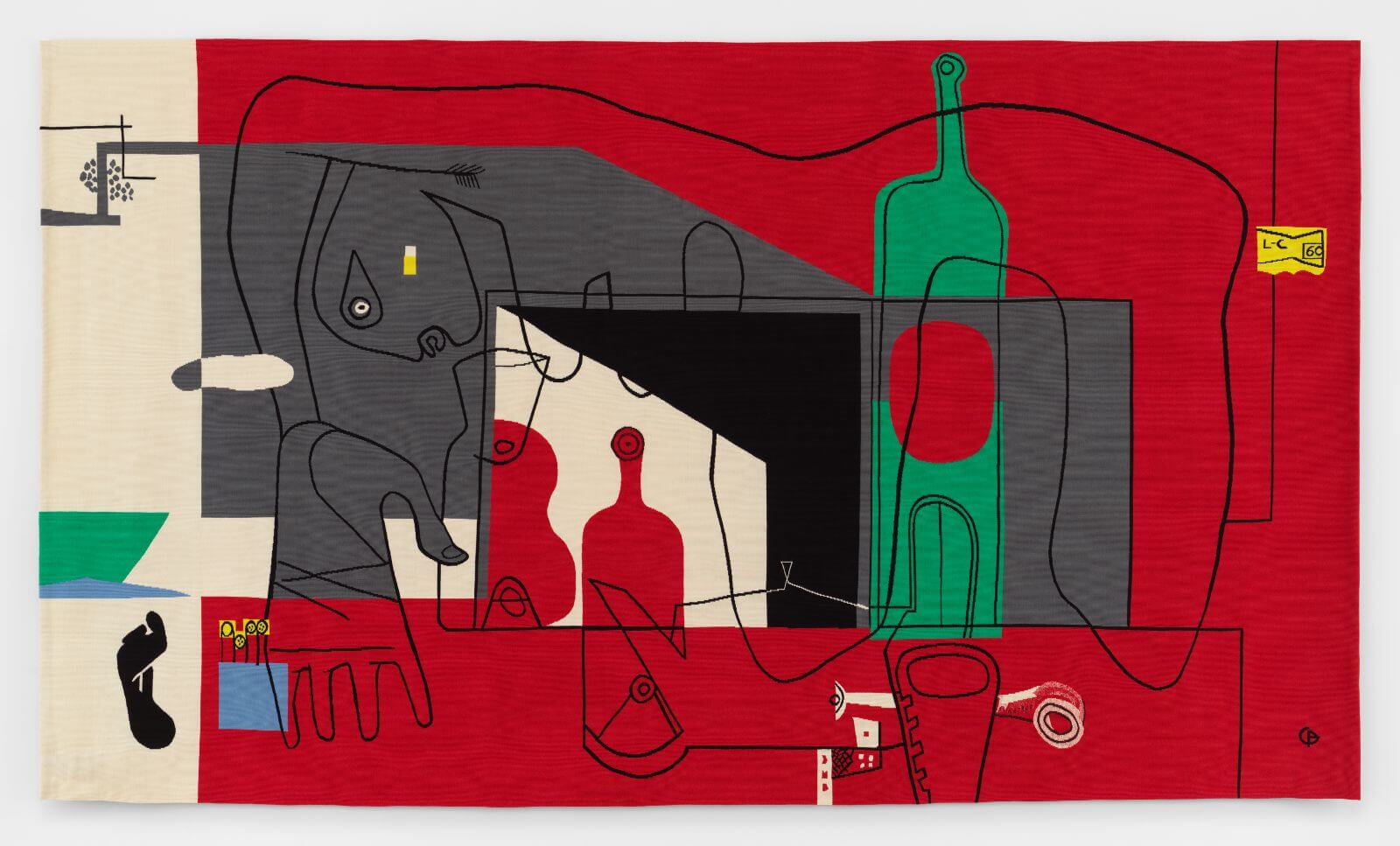
Le Corbusier, ‘Femme sur fond rouge’, 1960
COURTESY: The Estate and Almine Rech © F.L.C. / ADAGP, Paris / Artists Rights Society (ARS), New York 2022 / PHOTOGRAPH: Dan Bradica
R & Company: Joaquim Tenreiro
Though overlooked for decades, Joaquim Tenreiro was uncovered as one of the leading forces of Brazilian mid-century modern furniture design ten years ago. R & Company gallery was one the early advocates of this movement and its historical significance outside Brazil. A new exhibition, taking over the entirety of the gallery’s lower level, will incorporate 40 original, rare, and never-seen-before masterworks sourced over the last decade. The showcase is accompanied by a slew of archival documentation.
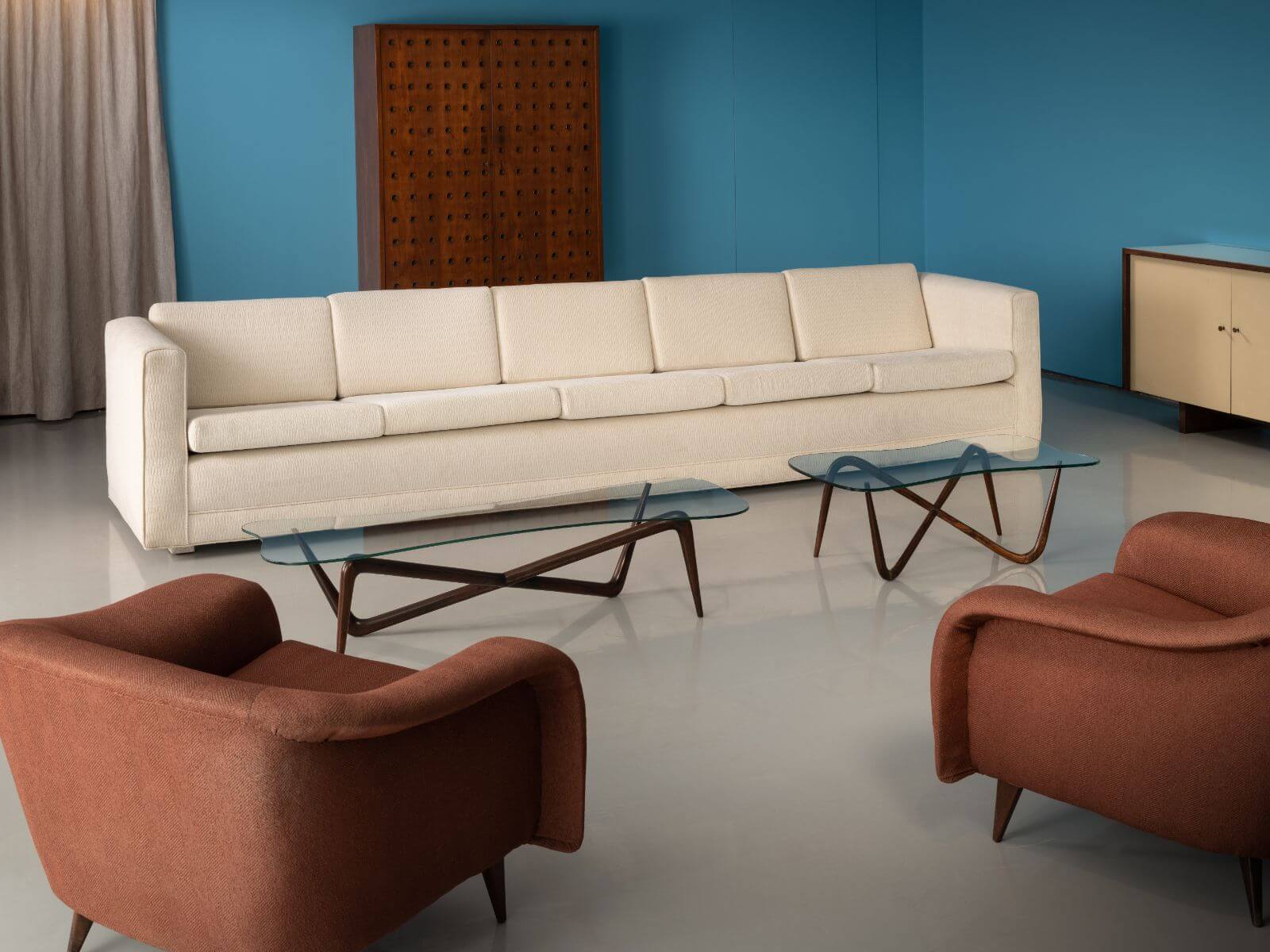
Exhibition view, ‘Joaquim Tenreiro: Tectonic Master’, at R & Company
COURTESY: R & Company / PHOTOGRAPH: Joe Kramm
Tenreiro transmuted traditional geometric forms and patterns into refined otherworldly sculptural forms. His output included everything from settees to wall-mounted cabinets and bar-height credenzas. The late-modernist amoebic aesthetic that came to define Oscar Niemeyer’s Brasilia – the country’s purpose-built capital – was partially influenced by Tenreiro’s experimental fervour.
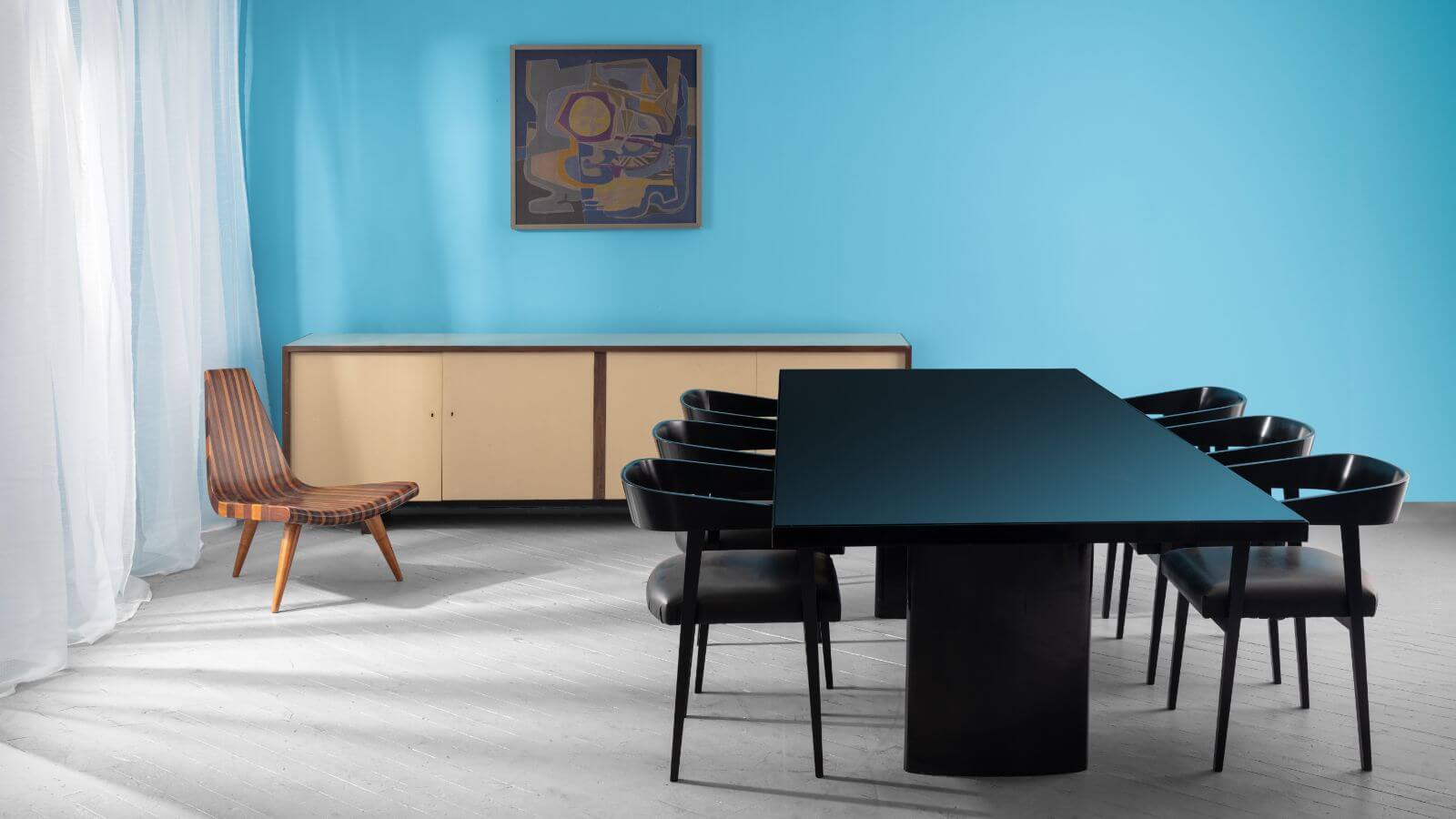
Exhibition view, ‘Joaquim Tenreiro: Tectonic Master’, at R & Company
COURTESY: R & Company / PHOTOGRAPH: Joe Kramm
“This exhibition is an opportunity for us to feature one of the most important designers of the 20th century, while also demonstrating our commitment to understanding the history of design and sharing that with our audience,” says R & Company principal Zesty Meyers. “This exhibition brings more of these exceptional, original objects on view and provides access to our photographs, furniture design schematics, installation plans and correspondence, adding a new dimension to our understanding of the singularity of Tenreiro’s vision and craftsmanship.”
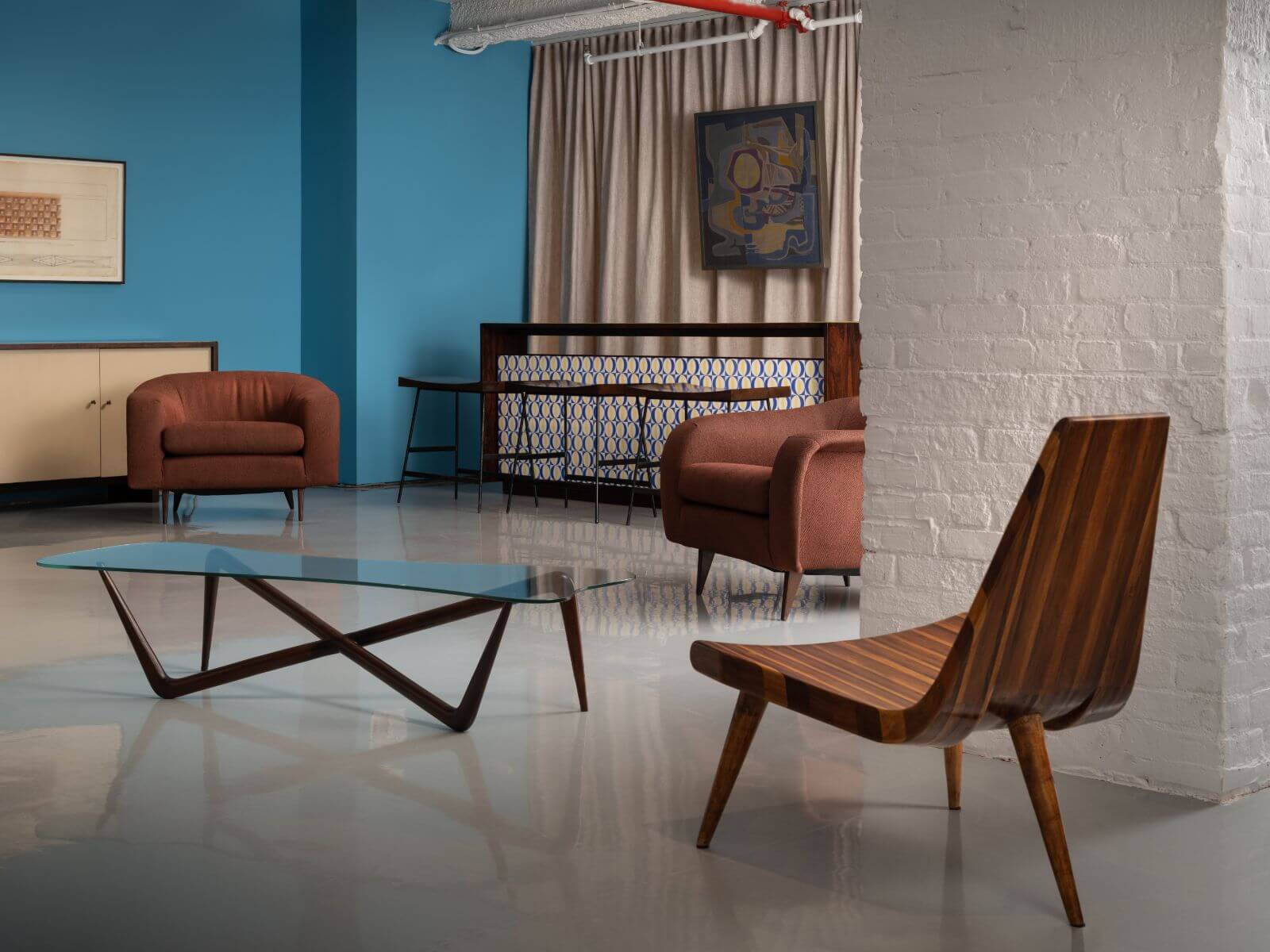
Exhibition view, ‘Joaquim Tenreiro: Tectonic Master’, at R & Company
COURTESY: R & Company / PHOTOGRAPH: Joe Kramm
Almine Rech: Le Corbusier, Nomadic Murals
Though perhaps mainly remembered for his purist aesthetic and imposing “machine for living” philosophy, Le Corbusier had a softer side. Expressed in later periods of his career (in projects such as La Cité Radieuse and the Church of Saint-Pierre, Firminy) the Swiss-French architect embraced the expressive attributes of organicism as a measure of the human body and better spatial proportions. The polymath explored all mediums of art and design in the pursuit of his ideals, but it was perhaps in tapestry that he was able to reconcile the divergent facets of his aesthetic philosophy.
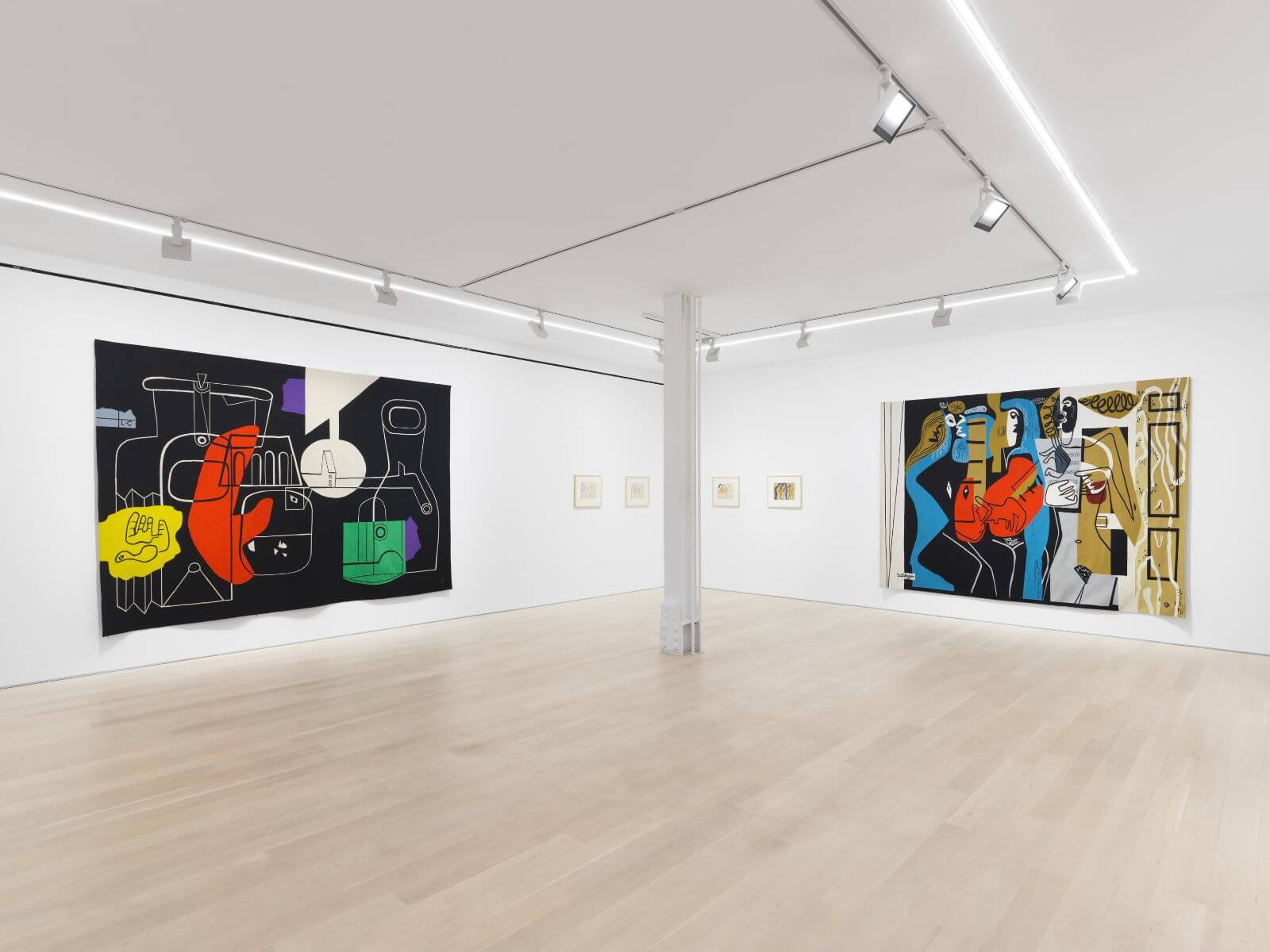
Exhibition view, ‘Le Corbusier, Nomadic Murals’ at Almine Rech
COURTESY: The Estate and Almine Rech / PHOTOGRAPH: Dan Bradica
A new exhibition at Almine Rech’s New York outpost seeks to reveal this often forgotten aspect of his practice. He first discovered the medium in 1936 and it became a fundamental, if overshadowed, staple of his output from then on. “His interest in this art form serves as a response to the challenge posed to architects by Fernand Léger, who had blamed them for ‘radically imposing’ their ‘smooth’ and ‘new’ surfaces,” writes Jean-Louis Cohen, architectural historian and curator of 2013 Museum of Modern Art exhibition ‘Le Corbusier: An Atlas of Modern Landscapes.’ “Le Corbusier came to believe that ‘by its texture, its material, by the reality of its production,’ tapestry ‘brings its own warmth to an interior.’”
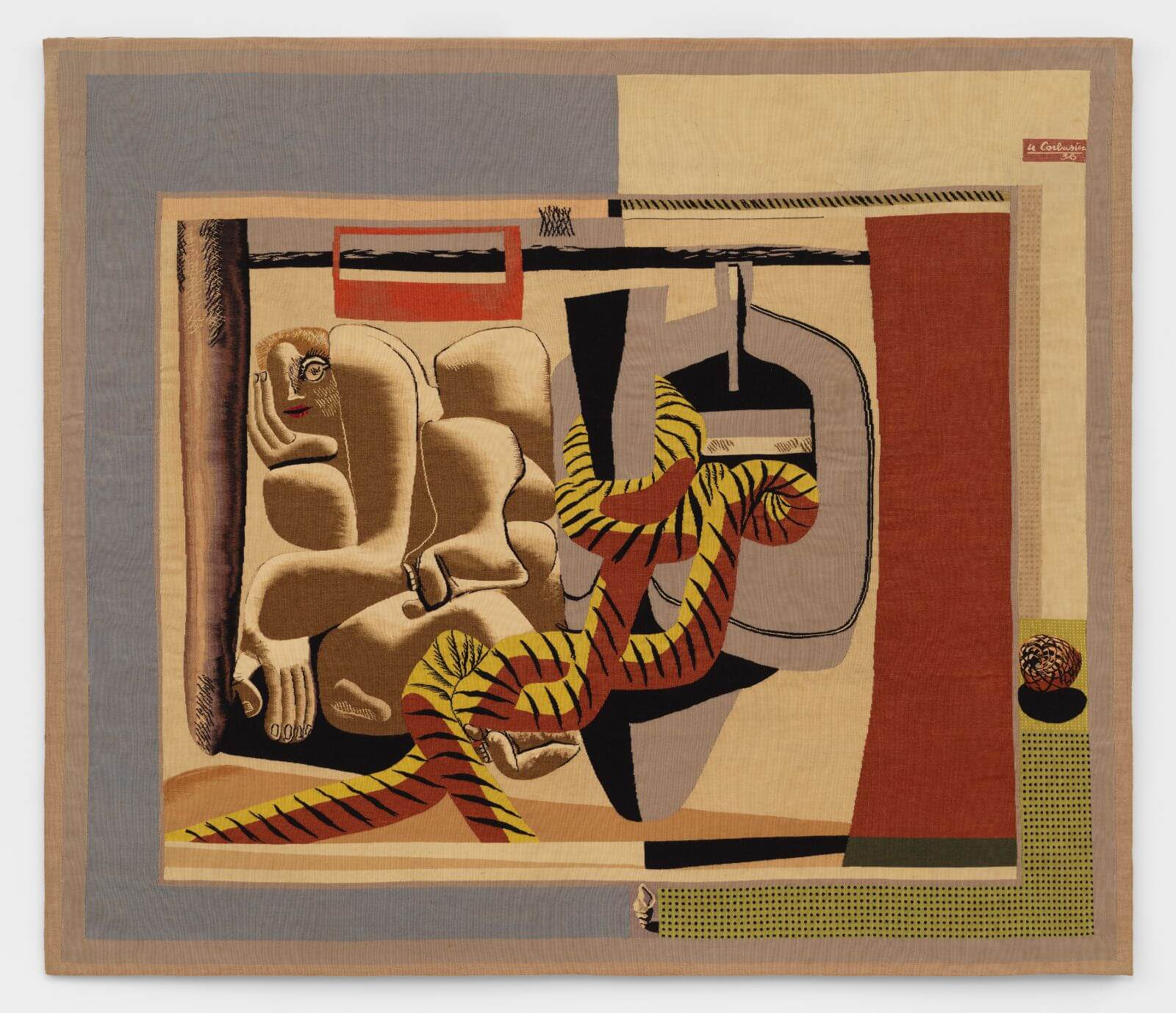
Le Corbusier, ‘Marie Cuttoli’, 1936
COURTESY: The Estate and Almine Rech © F.L.C. / ADAGP, Paris / Artists Rights Society (ARS), New York 2022 / PHOTOGRAPH: Dan Bradica
Many of the famed architect’s early tapestries incorporated imagery from his Purist compositions – assemblages of objects with a poetic charge – which he created in the 1920s, but later these “cartoons” began to feature feminine forms. In a letter to Oscar Niemeyer, Le Corbusier wrote that he had “found in tapestry an opening capable of receiving part of his mural work where his vocation as a painter finds its architectonic sustenance in full awareness.”
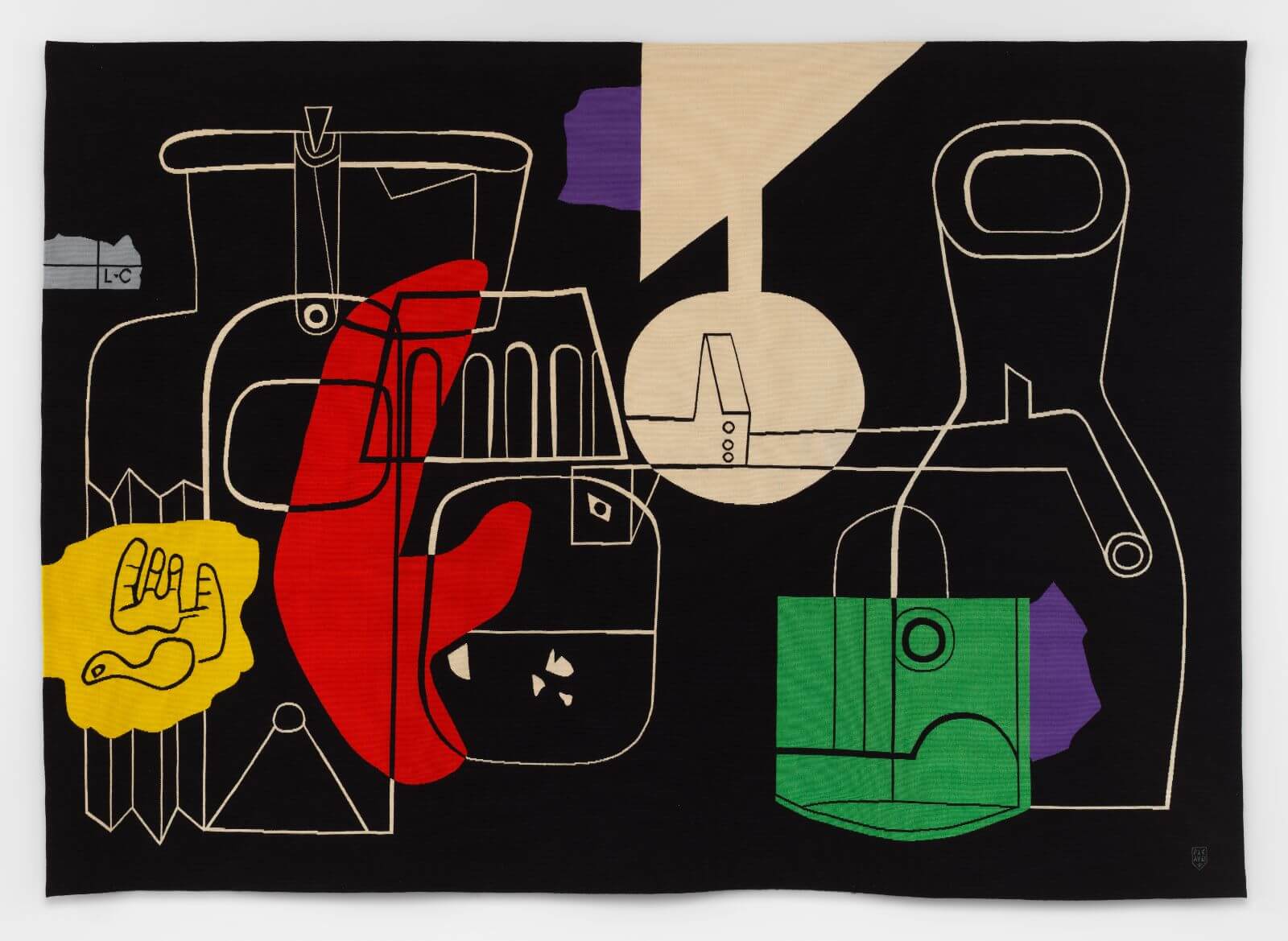
Le Corbusier, ‘Nature morte’, 1965
COURTESY: The Estate and Almine Rech © F.L.C. / ADAGP, Paris / Artists Rights Society (ARS), New York 2022 / PHOTOGRAPH: Dan Bradica
Almine Rech is showing an extensive selection of artwork that Le Corbusier created on commission for collector Marie Cuttoli. The offering covers everything from his observations and inventions of archetypal objects, to female body still lifes and musical instruments. This is the art gallery’s first foray into his work, an output that transcends traditional definitions of art and design.
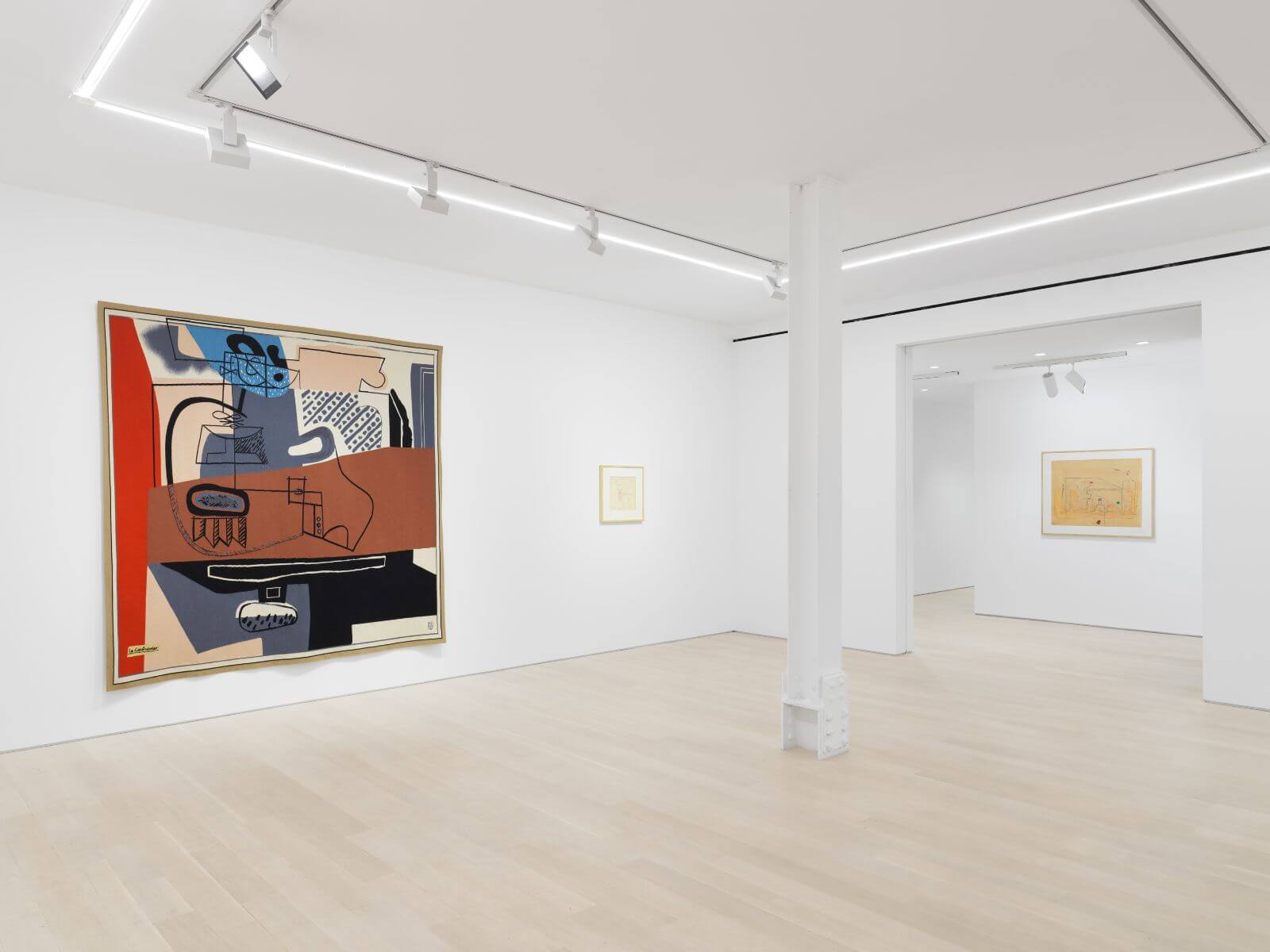
Exhibition view, ‘Le Corbusier, Nomadic Murals’ at Almine Rech
COURTESY: The Estate and Almine Rech / PHOTOGRAPH: Dan Bradica
‘Joaquim Tenreiro’ at R & Company.
‘Le Corbusier, Nomadic Murals’ at Almine Rech.




